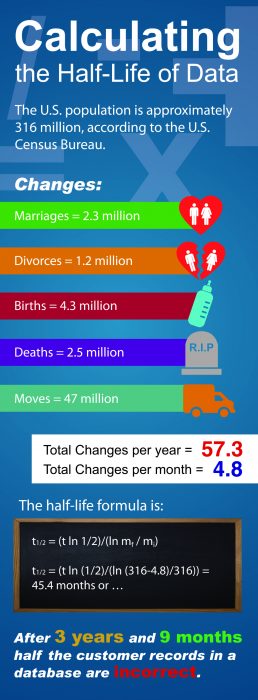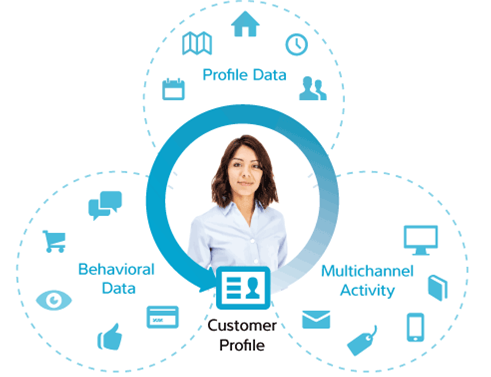Customers define success for a brand. They are the only judge of successful marketing, and the number one reason they leave a brand is because they feel the company does not care about them.
In reality, marketers of course care but often just don’t understand what their customers are saying on social media, what they’re buying and how they’re engaging in our stores, on mobile devices and online. Only 35% of customer experience officers believe they understand their customers well.
Even more surprising is that just 23% of customers say businesses understand them as individuals and cater to their preferences. What happens when we don’t understand is that, in our ignorance, we resort to things like irrelevant messaging and annoying roadblocks that disrupt the buyer’s journey. If we understand our customers, become their champion within our organizations, we can develop a customer-centric approach to meet their needs.

What can we do to fix this knowledge gap that creates a lack of true understanding? We can aggregate big-picture data into a single customer view – a single source of truth about the customer based on accurate internal and external data, unified across channels, locations, and business silos.
This is significant…consider for example the twelve distinct channels identified by HubSpot: website, videos, blogs, gated content, Messenger, Twitter, live chat, phone, a ‘contact us’ form, self-service, email, and Slack. When we put it all together, we can analyze past behavior in order to understand customer needs at each touchpoint and personalize future interactions. Smart, but definitely not simple.
Closing the Customer Knowledge Gap
What are the top considerations as you address the knowledge gap between customer expectations, better mapping your customer’s journey?
1. Get and keep data clean
We’re talking about the truth, and you can’t have the truth if you don’t have accurate data. And that points to all the customer data you have in your various silos and business units. The most critical advantage you can gain here is by verifying your data at the point of entry. Not only does that help fulfillment in your overall business operations, but it establishes a pattern of data governance that will come in handy later.
Key areas for data capture are account creation, web forms, and your call center. These are all areas in which inaccuracies (i.e., data entry errors) can creep in as you’re collecting the data which just makes life more difficult down the line.
Standardizing, linking and de-duping data is a big part of this operation. Problems result from even simple errors, such as different spellings of names from people interacting on your online site versus how they call in to support. Being able to marry those into one record that is a true representation of that specific customer at various touchpoints with your organization is critical. Updating data continuously helps, considering 2-4 % of customer data goes stale each month.
2. Build a customer profile with external data
External data includes all types of contact data, location information, and other types of customer information that you don’t typically have at your fingertips but can access from third parties. Fill in gaps in your customer records by adding email addresses, postal addresses, geocodes, demographics, mobile IDs, and more.
This helps unlock new marketing channels. Approximately 75% of shoppers search more than one channel before making a purchase. If you add a new postal address or email address to your customer record, you are then able to reach out to them in a multi-channel fashion. For instance, you might want to target an online customer with a direct mail campaign using a store coupon.
We can also uncover new customers with ‘lookalike’ attributes, such as demographics, psychographics, buying habits, preferences, even firmographics if you’re working B2B markets. Once you determine the characteristics of your best customers, you are empowered to find others like them. An example would be creating a profile of your best customer and uploading it to an ad network or to Facebook to deploy a look-alike campaign to find new prospects in those channels.
3. Leverage data across channels to really initiate that single customer view
Because a single customer view demonstrates how identities match across channels, the ideal method of creating the view is to choose a customer identifier that is unique, consistent, and static. Email is a good central identifier because it’s sticky. People move, change jobs, buy new phones, but they tend to keep their personal email addresses for years. This is a much better identifier than, let’s say a cookie or device ID because people use their emails to log into their apps and web browsers across devices and channels.
‘Knowing your customer’ advances a deep understanding that imparts true insight. This insight – gathered from all the customer data you’ve used and collected – empowers customer-centricity. No longer are you just a marketer, you’re a customer champion. And when you’re a customer champion, your customers get personalized information about the things they really care about, which fosters brand satisfaction, loyalty and advocacy.
Customer-centric marketing can only be achieved by having unprecedented visibility into the customer and leveraging personalization-at-scale to maximize the customer journey. To do this, companies are building a comprehensive profile of each customer by aggregating customer data from disparate sources, resolving identity and connecting to and between the various marketing channels: email, social, direct and in-store.

A data-driven approach enables true understanding of the customer so retailers can focus on delivering the “right time, right message, right channel” marketing that customers want. It’s a win-win proposition. The customer gets the relevant and seamless experience that makes buying more satisfying, and the retailer reaps the benefits of increased ROI, higher satisfaction, and greater customer advocacy and loyalty. This customer-centric approach is key to helping your organization stand out above the rest in a crowded marketplace.
La Quinta Improves Customer Data Quality, Grows Email Subscribers
These values are illustrated by Clairvoyix, a Nevada-based consumer data management and direct marketing firm that performs data hygiene and enhancement services. They service the hospitality industry, ranging from internationally known chains to independent hotels. This includes support for highly targeted email, social media, and mobile campaigns, with ROI based on actual spend.
Clairvoyix serves La Quinta Inns & Suites, one of the largest operators of limited-service hotels in the U.S. Along with maintaining an entire history of guest records, Clairvoyix also captures a file of each guest checkout record every night. These records are then verified, updated and standardized through the night in a “lights out” fully-automated environment that is part of the hotel chain’s Software as a Service (SaaS) marketing automation solution. By integrating a comprehensive data quality toolset into its marketing automation application, the firm is able to verify, correct and standardize its clients’ customer data (address, phone, name, and email) affordably and quickly. Consumer data hygiene costs have been reduced by more than $100,000 in year one.
Email verification is the cherry on top, as email has become a preferred method for companies to communicate with their customers. Domain names are automatically updated; the syntax is verified and fixed; and mail servers are checked as valid and accepting mail. Clairvoyix uses email append strategies to power up its clients’ databases by adding deliverable email addresses to incomplete customer records – a critical component that drastically extends marketing outreach. As a result, Clairvoyix has added nearly a million email records to La Quinta’s existing mailing addresses, with La Quinta reporting record growth during its following quarter.



